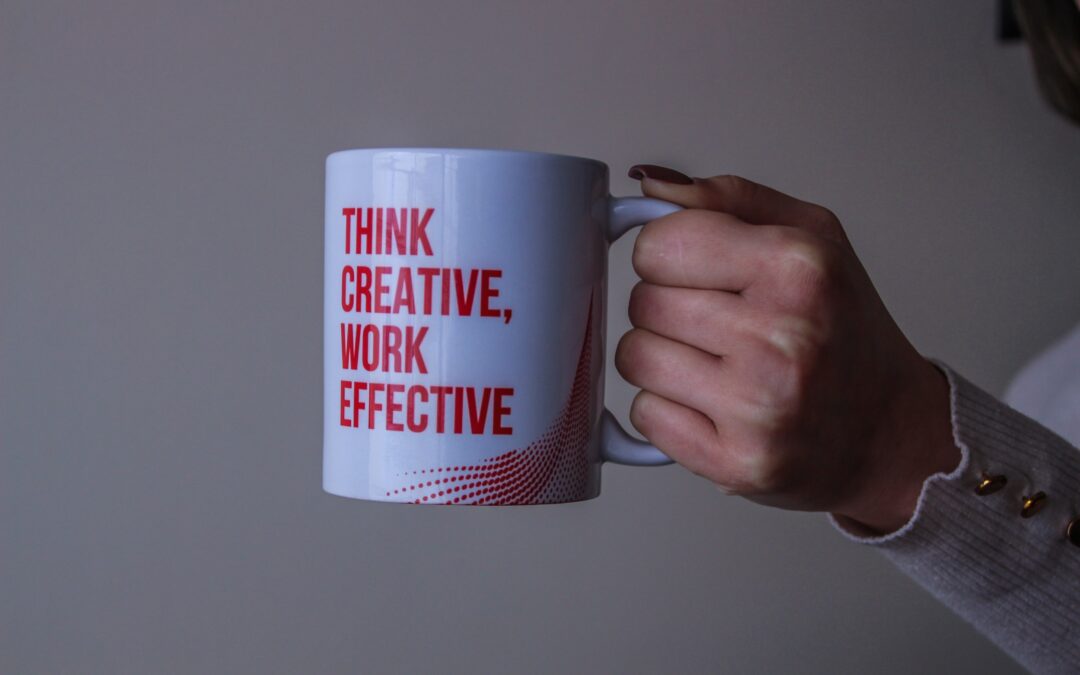


3 Steps to a Truly Terrific Innovation Team
“What had a bigger impact on the project? The process you introduced or the people on the team?”
As much as I wanted to give all the credit to my brilliant process, I had to tell the truth.
“People. It’s always people.”
The right people doing the right work in the right way at the right time can do incredible, even impossible, things. But replace any “right” in the previous sentence, and even the smallest things can feel impossible. A process can increase the odds of doing the right work in the right way, but it’s no guarantee. It’s powerless in the hands of the wrong people.
But how do you assemble the right group of people? Start with the 3 Ts.
Type of Innovation
We’re all guilty of using “innovation” to describe anything that is even a little bit new and different. And we’ve probably all been punished for it.
Finding the right people for innovation start with defining what type of innovation they’ll work on
- Incremental: updating/modifying existing offerings that serve existing customers
- Adjacent: creating new offerings for existing customers OR re-positioning existing offerings to serve new customers
- Radical: new offerings or business models for new customers
Different innovation types require teams to grapple with different levels of ambiguity and uncertainty. Teams working on incremental innovations face low levels of ambiguity because they are modifying something that already exists, and they have relative certainty around cause and effect. However, teams working on radical innovations spend months grappling with ambiguity, certain only that they don’t know what they don’t know.
Time to launch
Regardless of the type of innovation, each innovation goes through roughly the same four steps:
- Discover a problem to be solved
- Design solutions
- Develop and test prototypes
- Launch and measure
The time allotted to work through all four steps determines the pace of the team’s work and, more importantly, how stakeholders make decisions. For example, the more time you have between the project start and the expected launch, the more time you have to explore, play, create, experiment, and gather robust data to inform decisions. But if you’re expected to go from project start to project launch in a year or less, you need to work quickly and make decisions based on available (rather than ideal) data.
Tasks to accomplish
Within each step of the innovation process are different tasks, and different people have different abilities and comfort levels with each. This is why there is growing evidence that experience in the phase of work is more important than industry or functional expertise for startups.
There are similar data for corporate innovators. In a study of over 100,000 people, researchers identified the type and prevalence of four types of innovators every organization needs:
- Generators (17% of the sample): Find new problems and ideate based on their own experience.
- Conceptualizers (19%): Define the problem and understand it through abstract analysis, most comfortable in early phases of innovation (e.g., Discover and Design)
- Implementers (41%): Put solutions to work through experiments and adjustments, most comfortable in later stages of innovation (Develop and Launch)
- Optimizers (23%): Systematically examine all alternatives to implement the best possible solution
Generators and Conceptualizers are most comfortable in the early stages of innovation (i.e., Discover and Design). Implementers and Optimizers are most comfortable in the later stages (e.g., Develop and Launch). The challenge for companies is that only 36% of employees fall into one of those two categories, and most tend to be senior managers and executives.
Taking Action
Putting high performers on innovation teams is tempting, and top talent often perceives such assignments as essential to promotion. But no one enjoys or benefits when the work they’re doing isn’t the work they’re good at. Instead, take time to work through the 3Ts, and you’ll assemble a truly terrific innovation team.

3 ‘How Might We’ Alternatives That Actually Spark Creative Ideas
Q: How might we brainstorm new ideas to serve our customers better?
A: Have a brainstorming session that starts with “How Might We help customers [Job to be Done/problem]?”
If only it were that simple.
How Might We (HMW) is an incredible tool (not BS, as some would assert), but we misuse it. We focus too much on the “we” and not enough on the “might.”
Might > We
HMW was first used to prompt people to be “wildly creative while simultaneously leveraging [company’s] innate strengths.”
IDEO popularized the prompt as a way to solve “wicked problems” – problems so complex that there is no right or wrong answer.
In both of these cases, the assumption was that the word “might” would free people from the shackles of today’s thinking and constraints and give people permission to dream without fear of judgment and reality.
“We” kept ideas tethered to the reality of the company’s “innate strengths,” providing a modicum of comfort to executives worried that the session wouldn’t result in anything useful and would, therefore, be a waste of time.
We > Might
Alas, as time went on and HMW became more popular, we lost sight of its intent (prompt wildly creative thinking about wicked problems) and twisted it to our purposes.
- We end the HMW sentence with our problems (e.g., HMW cut costs by getting more customers to use self-service tools?).
- We use it to brainstorm solutions to things that aren’t even problems (e.g., HMW eliminate all customer service options that aren’t self-serve?)
- We mentally replace “might” with “will” so we can emerge from brainstorming sessions with a tactical implementation plan.
How Might Can YOU Fix HMW?
If you’re not getting creative, radical, or unexpected ideas from your brainstorming sessions, you have an HMW problem.
As a result, continuing to use HMW as a tool to prompt creative, radical, or unexpected ideas is the definition of insanity. And you are not insane,
Instead, mix it up.
Use different words to articulate the original intent of HMW.
How would we solve this problem if the answer to every request is YES?
Innovation thrives within constraints. Brainstorming doesn’t.
Even when you tell people not to constrain themselves, even implore them to value “quantity over quality,” you still get more “safe” ideas rather than more “crazy” ideas.
Do more than tell. Make a world without constraints real. Explicitly remove all the constraints people throw at ideas by creating a world of infinite money, people, capabilities, willingness, appetite for risk, and executive support. Doing this removes the dreaded “but” because there is no “but we don’t have the money/people/capabilities” or “but management will never go for it” and creates space for “and.”
What would we ask for if we were guaranteed a YES to only ONE request?
This question is often asked at the end of a brainstorm to prioritize ideas. But it’s equally helpful to ask it at the beginning.
This question shifts our mindset from “the bosses will never say yes, so I won’t even mention it” to “the bosses will say yes to only one thing, so it better be great!” It pulls people off the sidelines and reveals what people believe to be the most critical element of a solution. It drives passionate engagement amongst the whole team and acts as a springboard to the next brainstorm – How Might We use (what they said yes to) to solve (customers’ Jobs to be Done/problem)?
How would we solve the problem if the answer to every request is NO?
This one is a bit risky.
Some people will throw their hands in the air, declare the exercise a waste of time and effort, and collapse into a demotivated blob of resignation.
Some people will feel free. As Seth Godin wrote about a journal that promises to reject every single person who submits an article, “The absurdity of it is the point. Submitting to them feels effortless and without a lot of drama, because you know you’re going to get rejected. So instead of becoming attached to the outcome, you can simply focus on the work.”
For others, this will summon their inner rebel, the part of themselves that wants to stick it to the man, prove the doubters wrong, and unleash a great “I told you so” upon the world. To them, “No” is the start of the conversation, not the end. It fires them up to do their best work.
Don’t invite the first group of people to the brainstorm.
Definitely invite the other two groups.
How Might Will/Do YOU Fix HMW?
If you want something different, you need to do something different.
Start your next brainstorm with a new variation on the old HMW prompt.
How do people react? Does it lead to more creative or more “safe” ideas?
How might we adjust to do even better next time?

The Wisdom of Ignoring Your Customers: A Lobster Tale
Being the smart innovator (and businessperson) you are, you know it’s important to talk to customers. You also know it’s important to listen to them.
It’s also important to ignore your customers.
(Sometimes)
Customers will tell you what the problem is. If you stay curious and ask follow-up questions (Why? and Tell me more), they’ll tell you why it’s a problem and the root cause. You should definitely listen to this information.
Customers will also tell you how to fix the problem. You should definitely ignore this information.
To understand why, let me tell you a story.
Eye contact is a problem
Years ago, two friends and I took a day trip to Maine. It was late in Fall, and many lobster shacks dotting the coast were closed for the season. We found one still open and settled in for lunch.
Now, I’m a reasonably adventurous eater. I’ll try almost anything once (but not try fried tarantulas). However, I have one rule – I do not want to make eye contact with my food.
Knowing that lobsters are traditionally served with their heads still attached, I braced for the inevitable. As the waitress turned to me, I placed the same order as my friends but with a tiny special request. “I’ll have the lobster, but please remove its head.”
You know that scene in movies when the record scratches, the room falls silent, and everyone stops everything they’re doing to stare at the person who made an offending comment? Yeah, that’s precisely what happened when I asked for the head to be removed.
The waitress was horrified,” Why? That’s where all the best stuff is!”
“I don’t like making eye contact with my food,” I replied.
She pursed her lips, jotted down my request, and walked away.
A short time later, our lunch was served. My friends received their lobsters as God (or the chef) intended, head still attached. Then, with great fanfare, my lobster arrived.
Its head was still attached.
But we did not make eye contact.
Placed over the lobster’s eyes were two olives, connected by a broken toothpick and attached to the lobster’s “ears” by two more toothpicks.
The chef was offended by my request to remove the lobster’s head. But, because he understood why I wanted the head removed, he created a solution that would work for both of us – lobster-sized olive sunglasses.
Are you removing the head or making sunglasses?
Customers, like me, are experts in problems. We know what the problems are, why they’re problems, and what solutions work and what don’t. So, if you ask us what we want, we’ll give you the solution we know – remove the head.
Innovators, like you and the chef, are experts in solutions. You know what’s possible, see the trade-offs, and anticipate the consequences of various choices. You also take great pride in your work and expertise, so you’re not going to give someone a sub-par solution simply because they asked for it. You’re going to provide them with olive sunglasses.
Next time you talk to customers, stay curious, ask open-ended questions, ask follow-up questions, and build a deep understanding of their problems. Then ignore their ideas and suggestions. They’ll only stand in the way of your olive sunglasses.

Size Does Not Matter: 3 Stories of Small Innovations With Big Impact
Innovation is BIG!
Big ideas!
Change the world!
Go big or go home!
Which makes sense.
Giant corporations need big innovations to move the needle
Entrepreneurs need big ideas to get attention
Investors need big returns to take risks
But innovation thrives in constraints.
And “Go Small” may be the biggest constraint out there.
Here are three stories about small innovations that created big value
Lollipops Reduce Violence
Closing time at the bars is never pretty. It can be downright dangerous. What starts as a few insults shouted back and forth between individuals or groups of friends can quickly devolve into brawls, assaults, and even murder.
Every year, dozens of cities and towns run experiments to find ways to decrease incidences of violence around bars and clubs:
- Closing bars earlier
- Keeping bars open 24/7
- Training bouncers in crowd control tactics
- Pre-positioning taxis
- Better landscaping
And lollipops.
In 2001, various cities and towns in the UK began giving lollipops to people as they streamed out of pubs and clubs. The rationale varied:
- “It’s hard to suck and fight at the same time.” – Leicester, 2001
- “Research shows the sugar content helps to stabilise the behaviour of those who have consumed alcohol.” – West Oxfordshire, 2006
- “[Offering food] can stop people shouting, make them less aggressive and prevent post-alcohol hunger” – Camden Town, 2010
It’s estimated that these efforts, which eventually expanded to include flip flops and cookies, cost “tens of thousands of pounds,” a drop in the bucket compared to the millions of pounds spent each year on police and medical resources to deal with the drunken behavior.
Waffle Maker Saves the Planet
Imagine throwing away 20 BILLION wax-coated bowls and plastic spoons every year.
Imagine that you could keep 12 BILLION of those out of the waste system by doing just one thing.
Giving up ice cream.
Would you do it?
Yeah, me neither.
This is why we should be very thankful to a Syrian waffle vendor at the 1904 St. Louis World’s Fair.
Even though ice cream cones were in use as early as the 19th century, it wasn’t until a chance encounter at the World’s Fair that they went mainstream. In the sweltering summer heat, ice cream was a popular treat for the 20 million people visiting the fair. So, it’s not surprising that vendors eventually ran out of serving bowls.
Luckily for us and the planet, one of those popular ice cream vendors was next to Ernest A. Hamwi and his very unpopular warm waffle stand. Seeing his fellow vendor’s plight, Ernest took one of his waffles, rolled it into a cone, and a tasty partnership was born.
Town Crier Out Shares Facebook
On Thursday, August 11, as thousands of tourists arrived in Provincetown eager to begin celebrating the Cape Cod town’s largest summer festival, the sewer system failed. Although only 356 of the town’s 1500 properties were affected, most of those affected were the restaurants, hotels, and businesses at the heart of the town’s tourist industry.
Naturally, officials took to social media to alert businesses and residents of the impact. In a Facebook post, restaurants were told to close, and residents were told they “must reduce water use, including dishwashing, laundry, showering, and only flush when absolutely necessary,”
Naturally, such restrictions created problems for businesses and residents alike. But what about the thousands of tourists just arriving who were not subscribers to Provincetown’s Facebook account?
The Town Crier
In 1864, Provincetown created the position of Town Crier as a way to spread news throughout the community quickly. Over time, as technology made spreading information easier and faster, the Town Crier became more of a tourist attraction, responsible for greeting visitors and promoting members of the Chamber of Commerce.
Until August 11, when the 22nd Town Crier was called back to duty.
“All is not well in Provincetown,” the Town Crier proclaimed as he stood in front of Town Hall dressed, as usual, in historical garb and swinging his heavy bell. As Thursday turned into Friday, the Town Crier issued updates, listing the re-opened restaurants and the areas where toilet flushing and showers were now allowed.
“Let us pray to the supreme architect of the universe that the system will have been rectified,” he pleaded. I’m sure town officials gave thanks to the supreme architect of the universe that their small investment in maintaining an old solution was, again, creating quite a lot of value for the town.
Size doesn’t matter
Innovation is something new that creates value, and, as innovators, we naturally want to create BIG value. Heck, we want to change the world!
It’s easy to forget that Small can have a big impact, whether physically small like lollipops, a small distance away like waffle and ice cream vendors, or only able to reach a small audience like the Town Crier.
So when you find yourself obsessing about size, just paraphrase Dr. Seuss, “An innovation’s an innovation, no matter how small!”